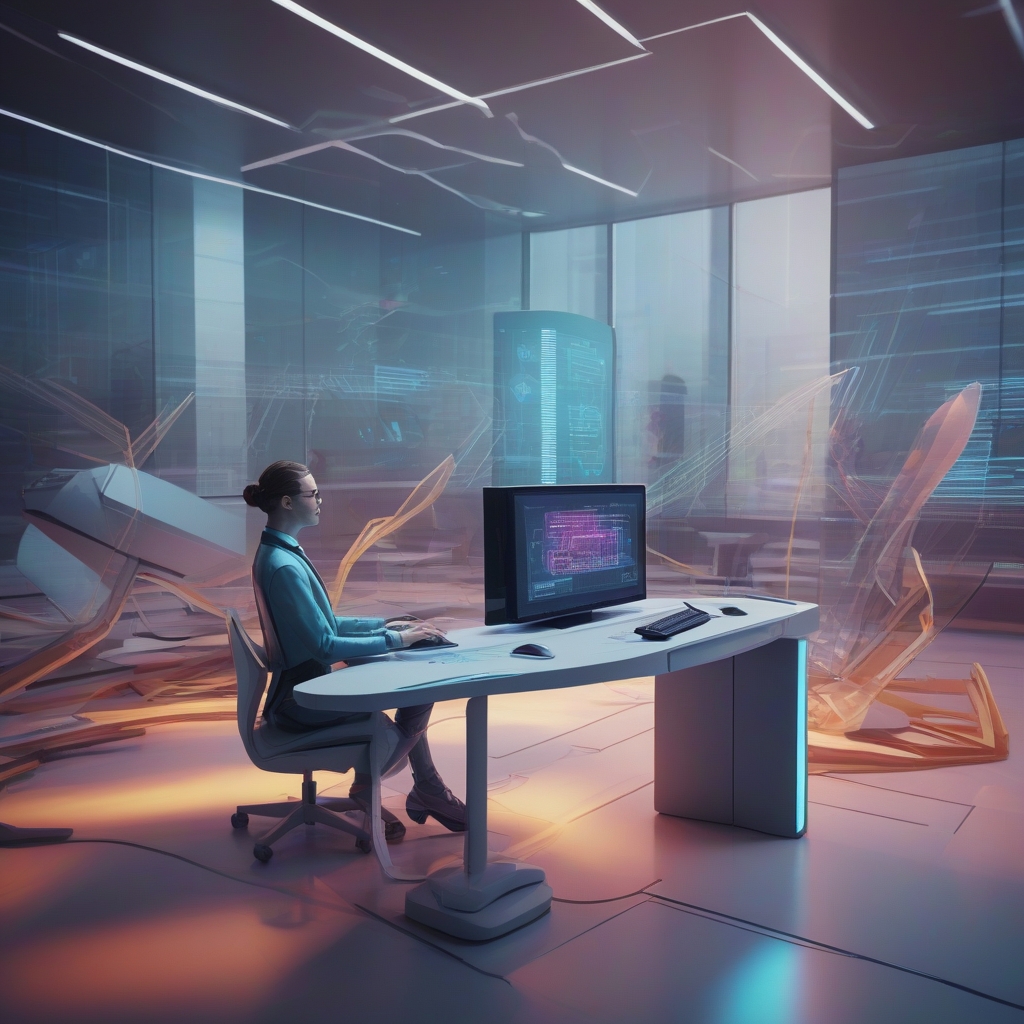Introduction: Anthropomorphic AI Meets Technology
In the fast-paced world of artificial intelligence, achieving human-like interaction with technology has always been a significant goal. **Anthropic AI’s latest model** bridges this ambitious gap, bringing AI closer to human-like levels of interaction and mistake tolerance. This recent advancement challenges traditional AI paradigms by allowing machines to mimic not only human efficiency but also our inefficiencies and quirks.
The Human-Like AI Revolution
Anthropic AI’s innovative model is noteworthy because it can operate a computer much like a human does, **mistakes included**. Imagine an AI that navigates your computer interface, using applications, creating and moving files, sometimes frustratingly misplacing a document or making a typo. This mirrors our own navigations and occasional musical comedy of errors around technology.
Unlike prior AI models, which aimed for precision and infallibility, this approach embraces the imperfection that makes interactions relatable. By allowing for errors, this new AI model can better cater to real-world scenarios where perfection is not always possible or necessary.
Key Features and Capabilities
What makes this AI model stand out is its ability to interact with computers in a manner that is:
- Flexible: Adjusts to different operating systems and software environments, learning and adapting over time.
- Human-like Error Management: Makes mistakes that real users make, enhancing relatability and real-world compatibility.
- Self-Learning: Offers a robust learning mechanism that mirrors human learning techniques, allowing the AI to evolve.
This technology pushes the boundary of AI by ensuring it is not only a tool but a virtual companion that understands human methodologies, mistakes, and often, our frustrations.
Bringing a Personal Touch to AI Interaction
Anthropic’s AI marks an important shift from the sterile, mechanical interactions often associated with computers to more **personalized, human-like exchanges**. This shift can dramatically alter how we view and interact with AI systems, fostering a more cooperative relationship between human users and machines.
Why Embracing Mistakes Makes a Difference
The capability of the new AI to make human-like mistakes may seem counterintuitive at first. However, it serves several significant purposes:
- Relatability: Mistakes can be teachable moments and when an AI, like a human, rectifies these mistakes, it creates a more relatable experience for users.
- Depersonalization of Error: Users are more forgiving of a system that mirrors their own behavior, imperfections and all.
- Creative Problem Solving: Similar to humans, this AI can develop unique solutions when faced with errors, unlocking new pathways in functionality.
The mistakes are not merely simulated. They are intricately staged to nurture an environment where AI can truly assimilate to user-centric paradigms.
Applications and Implications
The potential applications of this AI model are enormous, ranging from **streamlined office assistance** to **educational tools**, and even assisting in **creative endeavors**:
- **Office Productivity:** Advanced automated agents that understand tasks, can manage schedules, and provide intelligent suggestions while understanding common human errors.
- **Educational Aids:** AI tutors that recognize and adapt to students’ learning mistakes, providing customized assistance.
- **Creative Tools:** Building platforms that facilitate innovative design processes, where mistakes can lead to novel creative outputs.
Implications for Future AI Development
The evolutionary step presented by Anthropic AI is not merely incremental; it heralds a paradigm shift which implies:
- Growing Trust: Users may develop increased trust and reliance on AI, perceiving them as empathetic entities.
- Enhanced Collaboration: Human-AI collaboration could become more intuitive, fostering environments where machines complement human skill sets.
- Evolving AI Ethics: Raises questions on AI behavior ethics—balancing utility with the provision to err authentically.
As machine interaction becomes more nuanced through this approach, the landscape of artificial intelligence will likely become more personalized and ethical.
Conclusion: Towards a Symbiotic Future
Anthropic AI’s human-like model introduces an era where machines become not just tools but partners in the digital workflow. Far from aiming for flawlessness, this AI embraces an appealing level of imperfection that mirrors human interaction, making technology more approachable.
With this blend of sophisticated understanding and relatability, the future of AI holds immense promise not only for technological progress but also for creating a more collaborative relationship between humans and machines. As we edge closer to this reality, Anthropic’s approach serves as a compelling paradigm, guiding us towards an era of **symbiotic human-AI collaboration**, where both machines and humans grow and learn together.

Leave a Reply